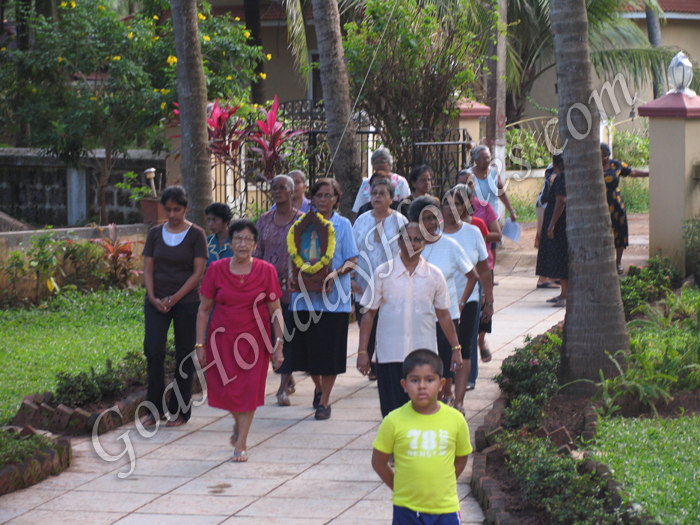Saibinn in Goa
In Goa, after the feast of Our Lady is celebrated on 8th September, there is a custom where the statue of the Blessed Virgin Mary is taken from the church to each and every house. It is known 'Saibinn' to the locals in Konkani and is a day where the Goans make the most out of the image of Our Lady.
Saibinn is a ritual that has a purpose of bringing the parish members together. On this day people from the whole ward come together and pray together with the family members of the house in which the statue is being held. They say the Rosary, offer some prayers and even sing praises to Our Lady.
The Goans have great joy in celebrating 'Saibinn' or bringing the statue of Our Lady to their homes. They do a lot of preparations for the arrival and prepare an altar at their houses where the statue will be kept for a day. Usually a white table cloth is used but a number of people decorate the altar in different ways with flowers, candles etc. They also fill their houses with the aroma of incense locally known as 'dhump'.
On the day of the transfer of the Our Lady statue from one house to another, people gather at the house at a time specified. Crackers are lit to mark the beginning after which the people gathered go to collect the statue. With the main member of the house leading the way, they then go singing hymns and saying prayers until they reach the neighbour's house and collect the statue. The same is done on the way back after receiving the statue.
After saying the Rosary, prayers and some hymns the people usually have a small gathering in which hot boiled grams are served as a main dish. The children are usually seen with big handkerchiefs spread on their laps so as to accommodate a lot of boiled grams. These days the people even serve cake, sweets and cold drinks along with the grams. The Saibinn ends after this and crackers are again fired to mark the end. Some neighbours drop in throughout the remaining day to join in the family prayers.

